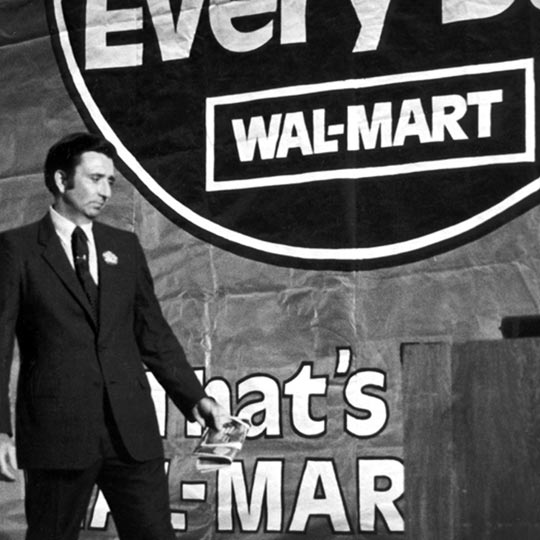Sam’s drive kept Walmart expanding into new areas. By 1970, expansion required a new revenue stream–the stock market.
Back to
Top
Taking the Company Public

Stock Offering
By 1970, Sam and Bud had opened 38 stores and were doing more than $44 million in annual sales. But to keep expanding the business, they had to borrow more money. “That practice,” Sam said, “had gotten me into debt to practically every bank in Arkansas and southern Missouri.” Sam and Bud realized that only a public stock offering would let them get out of debt and continue building the company. In October 1970, Sam took Walmart public with an offer of 300,000 shares that traded over the counter. Less than two years later, the stock had quadrupled in value and had begun trading on the New York Stock Exchange.

Certificate for 100 shares of Wal-Mart Stores, Inc. stock, issued to Sam Walton.


We wanted to expand, and we realized we weren’t generating enough profits both to expand and to pay off our debts … [Bud and I] agreed to seriously explore the possibilities of going public. It was a huge step for us.
Top Performer
To call Walmart’s stock performance phenomenal would be an understatement. The first offering, on October 1, 1970, was $16.50 per share. Since then, Walmart stock has split two-for-one 11 times. That means a person who bought 100 shares for $1,650 in 1970 would, 40 years later, have 204,800 shares, worth about $17 million. Quarterly dividends have been paid continuously since 1973.

Sharing the Profits
In 1971, Walmart introduced an associate profit-sharing plan. “The idea for sharing profits and benefits,” Sam recalled, “had come up even before we went public, not from me, but from Helen.” Like the value of the company, the value of the profit-sharing plan grew at an astounding pace. Many associates saw their portfolios turn into small fortunes as the plan fueled the exponential growth that the young company experienced.
Those who bought in that offering, or who owned some of those early partnerships and had them converted in that offering, made an absolute killing.

















